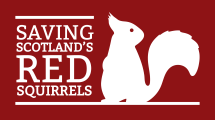…Park Authority aims to conserve and enhance the natural and cultural heritage, promote the sustainable use of the natural resources of the area, promote understanding and enjoyment (including enjoyment in the form of recreation) of the special qualities of the area by the public, and promote sustainable social and economic development of the communities of the area. Visit website … […]
Read More…
…Scotland continues to provide a home for the bulk of the country’s red squirrels, which still occurs as the sole species of squirrel over highland Scotland. Happily, the sightings also show that the native species still occupies a large area in the south of Scotland, although here they share the landscape with grey squirrels. The largest concentration of squirrel reports… […]
Read More…
…future Scotland’s recovering pine martens could also play a role in controlling grey squirrel numbers in some areas. These potential solutions are promising for the future of red squirrel conservation in Scotland, and the project is following their developments closely. However, we simply can’t afford to wait in the hope that they will work. The story south of the border… […]
Read More…
…While there is still a long way to go, the Scottish Squirrel Group is committed to the development of the new Strategy to guide the next decade of strategic actions and work towards the new ambitious 50-year vision for the recovery of red squirrels throughout Scotland. Stay tuned for further updates as the group continues this vital and important work!… […]
Read More…
… Emma: “The work that we do in the north east has evolved over the last 2-3 years, as we inch ever closer towards our goal of eradication of grey squirrels from Aberdeen. In the first 10+ years of the project we relied on a team of staff to carry out the majority of work on the ground, with volunteers… […]
Read More…
…control activities in the area. This will pave the way for a long-term southward shift of the current “Highland Line Control Zone” – the 10km zone stretching from Balloch to Montrose and buffering the diagonal Highland Boundary Fault Line, where Scotland’s Highland red-only squirrel population intersects with the most northly reaches of grey squirrels incurring from the Lowlands. These new… […]
Read More…
…for red squirrels and, in the longer term, reduce the rate of transmission of the virus. If you are interested in getting involved to help slow the spread of squirrelpox , please get in touch, or read our Squirrelpox Action in the Central Lowlands Toolkit for more information. Read the full report: Squirrelpox Detection in the Central Lowlands 2017-2020 … […]
Read More…
…Your group’s Hub Admin can advise, or if in doubt please contact us at squirrels@scottishwildlifetrust.org.uk Does the group map show sightings from the current year? Yes, your group’s map shows sightings from the current year (starting in January), and you can filter for the years with the dropdown above the map. On the other hand, the map on the public… […]
Read More…
…attach radio collars. Trapping was carried out in the National Trust-owned woodlands immediately adjacent to the town and in the residential gardens of local volunteers. The radio-collared individuals were then regularly tracked throughout the summer and their locations recorded, to investigate how red squirrels move around the town and make use of the available resources. Alongside the live-capture trapping and… […]
Read More…
…for more information. Landowners Landowners in certain areas can control grey squirrels under Forestry Grant Scheme funding, or join the project’s trap-loan scheme. Woodland owners, meanwhile, can adjust the management of their woods to benefit red squirrels. Please contact your local SSRS or Scottish Forestry staff for more information. Area Contact Susie McNaughton Highland Line Conservation Lead smcnaughton@scottishwildlifetrust.org.uk… […]
Read More…
